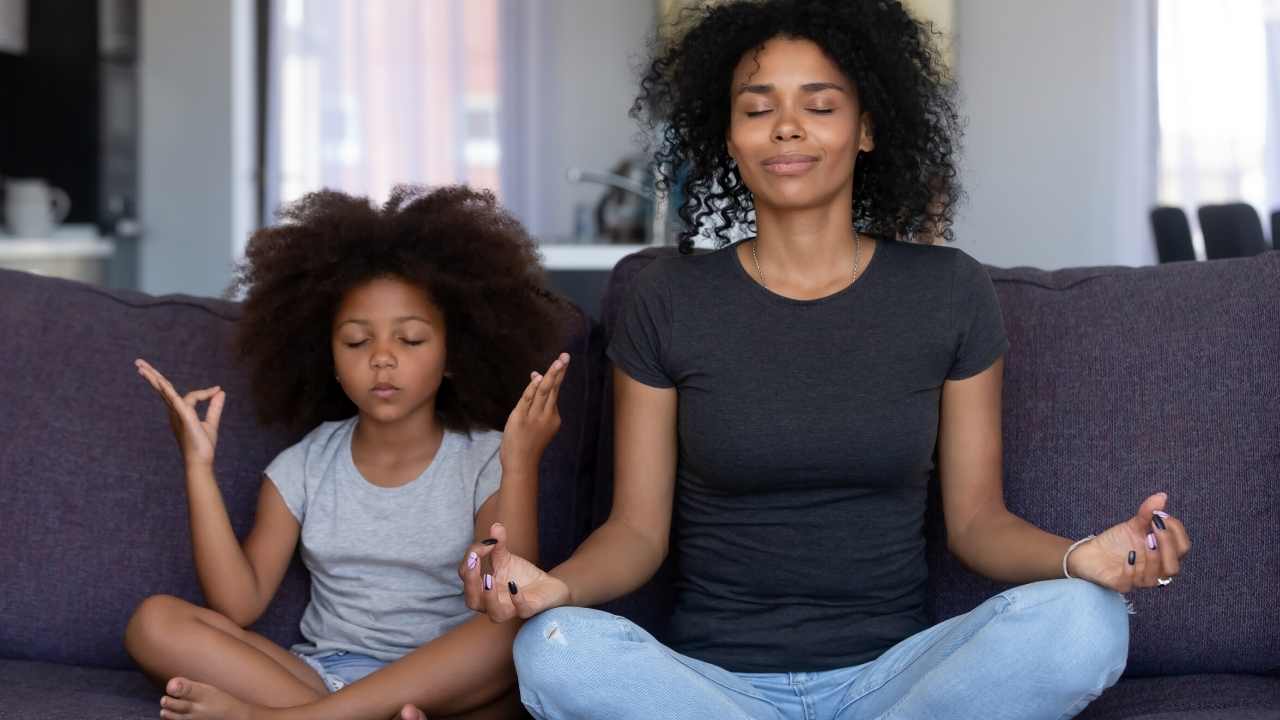
What does yoga's meaning mean to you? Yoga is an ancient practice. It can take many forms. Some of them are primarily physical, while others are more mental. Here, we will explore Hatha yoga, Karma yoga, Jnana yoga, and Raja yoga. You might be surprised to discover that yoga has many mental health benefits. Find out more about each type of yoga. There's a type of yoga for everyone!
Hatha yoga
Hatha Yoga, a secret practice that was only practiced by priestly men and monks in ancient times, was known as Hatha Yoga. There were many stories of mystical significance about yoga practices. In India, yoga was becoming more popular and monks began to demonstrate asanas at public events. British photographers published photographs of monks showing the poses. Hatha Yoga became very popular. This spread its popularity to many countries, including the United States.
Karma yoga
What is Karma Yoga? It is action motivated by necessity. For example, farmers feel the necessity to cultivate the land as they depend on it to provide food. This helps farmers provide food for their families as well as the community. Similarly, the story of Arjuna and Krishna teaches us that karma yoga is the act of doing dharma without any thought of reward or punishment. A farmer can be an example of someone who practices karma yoga.
Jnana yoga
Jnana yoga, a type of practice, is dedicated to self-realization. It is also called jna mrga and "the path of knowledge." Jna yoga is different than other types of yoga like karma yoga or bhakti. Jna yoga emphasizes self-knowledge and the importance of "realizing your true self" in addition to focusing upon self-knowledge.

Raja yoga
Yoga's meaning isn't just physical. To achieve deep meditation it requires disciplined thought. The yogi has to be aware of his or her thoughts and emotions, and must learn to accept and renounce them. He or she must think positively about himself or herself and must harbor positive thoughts about others. To help achieve a deep sense and meaning, the yogi must be able to forgive others.
Jnana yogic practices
Jnana yogic practices concentrate on the relationship of body, mind and Atman. Jnanis understand that their bodies are only containers for mental, physical, and emotional phenomena and are not the source of these phenomena. They practice stillness in the Atman and observing the world around them. This knowledge allows jnanis to distinguish the ego and the true self and helps them achieve mental stability. Jnana is best practiced if you have done other types such as Hatha, Karma, or Bhakti yoga. All of these practices purify the mind, body, and soul. Jnana yoga yogic practices heals the heart.
Jnana yogic meditation
Jnana Yoga aims to help people realize their true potential. Yogis in this form of yoga seek transcendent knowledge. They may feel detached from their emotional and physical problems as well as the desire to attain yoga fruits or psychic powers. This state of detached awareness is quite easy to confuse, especially for the inexperienced yogi. This is closer to autism.
Jnana yogic practice
Jnana Yoga is spiritual practice that allows you to be aware of your true nature. Jnana Yoga requires you to overcome many obstacles. The overcoming discrimination is one of the challenges. This stage allows you to question the existence or duality. This stage teaches you to rest in the stillness and peace of the Atman. It does not undergo emotions or change. It is important not to rush.
Samadhi
There are many meanings of the word "samadhi". They can be interpreted in many different ways. Samadhi, in Hinduism means a state of greatness and emptiness. This experience is often sought after. It is the experience of Brahman, or all that is, in Hinduism. There are ten kinds of samadhi, ranging from ananda (the cognizance of standards) to Kaivalya (all that is).

Self-discovery
Meditation is a way to explore the notion that Yoga is about self-discovery. You will be able to visualize your best self during meditation. This will help you explore your identity and what makes you happy. This exercise can be especially helpful for someone who is new to yoga. The prompts can be used in conjunction with your yoga practice. These tips will help you find your best self, and your yoga practice will be more effective when you pair it with journaling.
Purification
The purification of the elements is at the heart of yoga. It is possible to achieve harmony in all aspects and of your life by cleansing the elements. An unpurified element can cause illnesses that can be mild or severe depending upon the severity of the impurity. These conditions can be energetic, mental, and physical. These conditions can often be healed by yoga purification. The purification process involves cleansing and toning your body.
FAQ
What type of music is used in a yoga studio's music?
Many yoga studios play soft instrumental music during class. This is to promote learning in a peaceful environment.
Others prefer upbeat music such as hip hop, jazz, and rock.
Pay attention to what you are listening to. Music can sometimes distract from our practice.
How long does yoga take?
You must learn how to do yoga correctly, just like any other skill. But once you've learned basic positions, you'll be able to practice yoga at home without much trouble.
To start, complete about 20-30 minutes of warm-ups before beginning your class. You can then spend 5-10 min warming up by doing simple stretches. Work your way into more challenging poses.
Once you have mastered the basics you can move on into intermediate classes. Here you'll learn advanced moves. For instance, if you're just beginning yoga, you might start by learning standing poses like the Tree and Mountain (Vrksasana), respectively.
How long do yoga classes take?
Most yoga classes last 45 to 90 minutes. Some teachers offer shorter or longer sessions, at different times during the week.
What happens if yoga is done every day?
You feel calm, relaxed, and centred. It improves your posture, balance and flexibility.
You will become more aware and conscious of your body, how it feels when moving. This awareness makes you more mindful and conscious of yourself.
Yoga improves concentration.
Your mind is sharper, clearer, and more focused. It calms your nervous systems. It helps to reduce stress levels. And it gives you a sense of peace and well-being.
Statistics
- The American Psychological Association recently shared that 84% of American adults feel the impact of prolonged stress (5). (healthline.com)
- Gentle yoga has been shown to ease some of the discomforts of tender, swollen joints for people with arthritis, according to a Johns Hopkins review of 11 recent studies. (hopkinsmedicine.org)
- In comparison, a 125-pound person is estimated to burn 135 calories in 30 minutes of walking (at a pace of 15-minute miles) and 210 calories bicycling at a moderate pace on a stationary bike. (everydayhealth.com)
- A 2020 review of 27 studies (1,805 total participants) of yoga interventions in children or adolescents found reductions in anxiety or depression in 70 percent of the studies, with more promising results for anxiety. (nccih.nih.gov)
- The people in the yoga group were 37 percent more likely to have quit smoking by the end of the 8-week program. (nccih.nih.gov)
External Links
How To
Is yoga a good way to lose weight?
You need to know what yoga is before you can answer this question. Yoga, an ancient form exercise, originated in India. It was developed by Indian yogis interested in achieving physical fitness and spiritual enlightenment.
Yoga focuses on stretching and strengthening muscles while simultaneously relaxing the mind and body. The ultimate goal of yoga is to help you relax and let go of all stress and anxiety. Focusing on breathing techniques and meditation are the best ways to do this.
Yoga is a practice that involves various postures or poses. They are intended to stretch certain muscles and strengthen others. These poses can be held for several minutes. These poses may include rhythmic movements like slow walking, jumping or moving through the mud.
The goal behind yoga is not to lose calories, but to increase your overall energy. People who practice yoga can keep a healthy weight.
You'll be amazed at how relaxed you feel when you start practicing yoga. Your moods will improve, and you'll sleep better.
Your skin will glow, and you'll look younger.
Yoga can help people lower their blood pressure.
Another study has shown that yoga helps to reduce the symptoms of depression.
Yoga is not like any other form of exercise. It increases the oxygen flow in the body. This allows your brain to relax, releasing endorphins that can stimulate feelings of happiness and joy.
It should be noted that some individuals struggle with weight loss due to their genetics. If you are one of these individuals, it may be best to not do yoga until reaching your ideal weight.